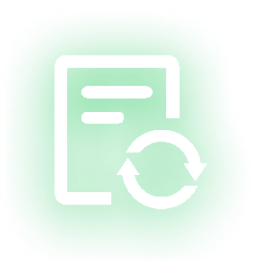Description
In web development and API interactions, HTTP request methods serve as the core mechanisms for client-server communication. The HTTP/1.1 protocol defines eight fundamental request methods, each representing distinct operations on resources. This article will systematically explain these eight HTTP methods and their application scenarios, aiming to help developers design more standardized APIs while providing technical references for users of website online monitoring products.
Analysis of HTTP Request Methods
1. GET – Data Retrieval
Purpose: Request specified resources
Characteristics:
• Parameters transmitted via URL (visible in browser history)
• Native cache support mechanism
• Idempotent and safe, ideal for data query scenarios
Example:
GET /products/123 HTTP/1.1
Host: api.example.com
Security Monitoring Focus:
Prevent sensitive data exposure in URLs
Best Practices:
• Adhere to 2048-character length limit
• Use POST for sensitive parameters
2. POST – Data Submission
Purpose: Create new resources or trigger processing operations
Characteristics:
• Parameters placed in the request body (supports complex data structures)
• Non-idempotent; repeated submissions may yield different outcomes
• Default encoding type: application/x-www-form-urlencoded
Example:
POST /users HTTP/1.1
Content-Type: application/json
{“name”:”John”,”email”:”john@example.com”}
Typical Scenarios:
• Form submissions
• File uploads
• Triggering batch processing tasks
Monitoring Applications: Frequently used in API call monitoring to detect abnormal submission behaviors like duplicate submissions.
3. PUT – Resource Replacement
Purpose: Full update of existing resources
Characteristics:
• Idempotent operation (identical outcomes with multiple executions)
• Requires complete resource path specification
• Automatically overwrites target resources
Example:
PUT /api/users/123 HTTP/1.1
Content-Type: application/json
{ “name”: “Alice Smith”, “email”: “john@example.com” }
4. DELETE – Resource Deletion
Purpose: Request server to remove specified resources
Key Considerations:
• Actual deletion depends on server implementation
• Idempotent nature ensures safety of repeated requests
• Recommended to use with permission verification
Monitoring Scenarios: Log audit trails of deletion operations
Best Practices: Use with authentication mechanisms
Example:
DELETE /api/users/123 HTTP/1.1
Host: example.com
5. HEAD – Metadata Retrieval
Purpose: Fetch resource metadata (80% less data transfer than GET)
Use Cases: Link validity checks
Example:
HEAD /api/users/123 HTTP/1.1
6. PATCH – Partial Resource Update
Purpose: Apply partial modifications to existing resources (more bandwidth-efficient than PUT)
Characteristics:
Updates specific fields instead of replacing entire resource
Reduces payload size for partial changes
Example:
PATCH /api/users/123 HTTP/1.1
Content-Type: application/json
{ “email”: “new.john@example.com” }
7. OPTIONS – Method Discovery
Purpose: Probe server-supported HTTP methods
Response Header Example:
Allow: GET, HEAD, OPTIONS
8. TRACE – Message Loopback Testing
Purpose: Diagnose request/response chains via echo responses
HTTP Request Methods Comparison Matrix
| Method | Safe | Idempotent | Request Body | Cacheable | Form Support |
| GET | √ | √ | × | √ | √ |
| POST | × | × | √ | × | √ |
| PUT | × | √ | √ | × | × |
| DELETE | × | √ | × | × | × |
| PATCH | × | × | √ | × | × |
| HEAD | √ | √ | × | √ | × |
Application Scenarios of HTTP Request Methods
• User System
Create User: POST /users
Retrieve User: GET /users/{id}
Update Profile: PUT /users/{id}
Delete Account: DELETE /users/{id}
• File Management
Chunked Upload: PATCH /files/{id}
Metadata Retrieval: HEAD /files/{id}
• API Discovery
Method Support Detection: OPTIONS /api
Development Considerations
Method Selection Principles
RESTful Compliance: Select methods based on resource state transitions
Security Priority: Prioritize POST/PUT for sensitive operations
Performance Optimization: Use GET with caching for high-frequency data access
Version Control: Implement API versioning via URL or headers
Security Standards
GET Requests: Must not modify resource states
CSRF Protection: Enforce for state-changing operations
Performance Optimization
HEAD Method: Rational utilization to reduce bandwidth consumption
Retry Strategy: Implement automatic retry mechanisms for idempotent requests
Monitoring Recommendations
Track abnormal method usage frequency (alert if TRACE utilization > 0.1%)
Detect PUT/PATCH misuse (trigger warnings when error rate exceeds 5%)
Mastering HTTP method characteristics not only enhances API design quality but also enables precise anomaly detection through granular monitoring.
All features free for life for the first 500 users!
Sleep easy—your website is always protected!














